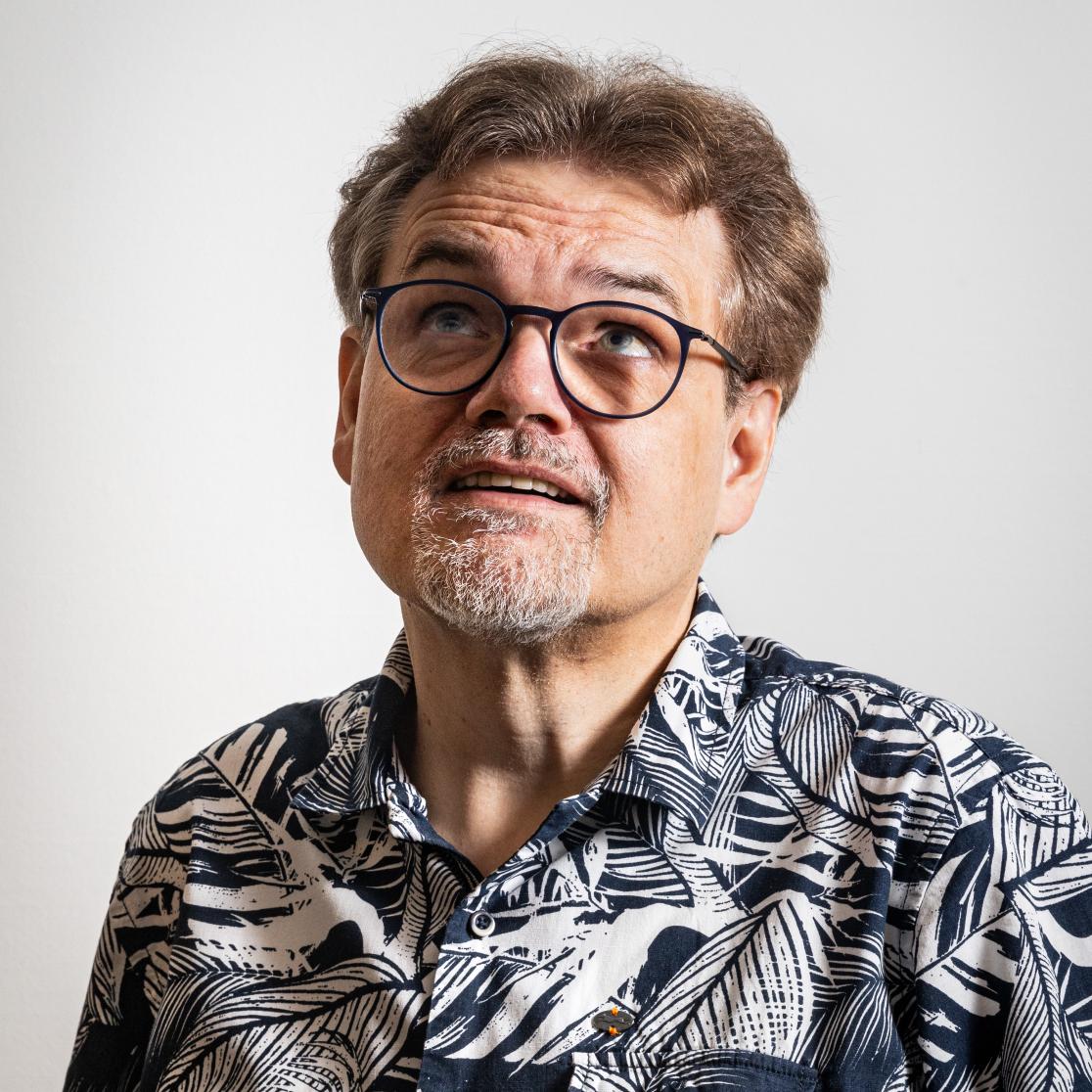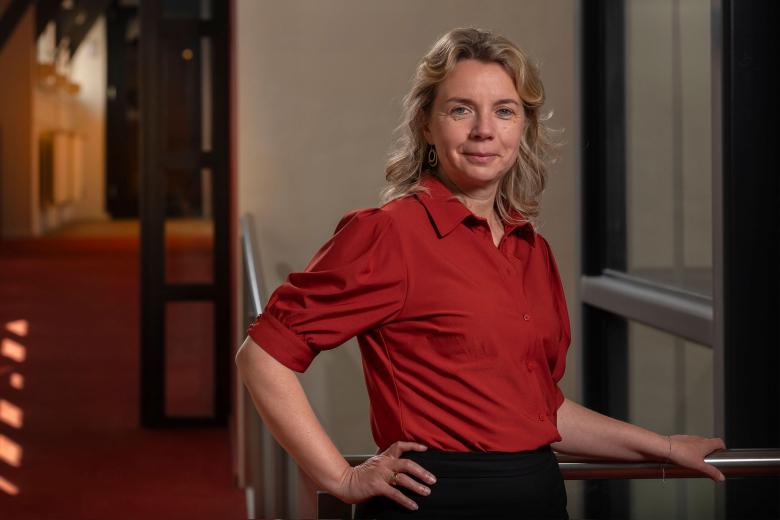How do you turn thoughts into images?
Even more than his undisputed ingenuity and technical savvy, it is his imagination that has lifted Rainer Goebel to the highest echelons of cognitive neuroscience. In no less than a world-class achievement, he recently landed his second ERC grant worth €2.5 million, this time for his research project ‘Reading the mind’s eye: AI-inspired personalised brain models of mental imagery.’ “Finding the best people for the project is currently the biggest challenge. I’m looking for suitable candidates from the Netherlands and abroad,” he says. “In five years’ time we will, I hope, know how thoughts become images. We’re working hard on that. I’m optimistic.”
Rainer Goebel is not only a scientist to the core. He is also in thrall to the romantic notion of science as an endeavour ‘to boldly go where no man has gone before,’ as his beloved series Star Trek put it. “Our project is a small moonshot,” he says, laughing. “Brain research can be compared to space travel in many ways. Visionary science definitely appeals to my imagination; that’s probably why I have such a soft spot for science fiction and technical gadgets. Science is also emotion.”
MRT scanner
Goebel was appointed professor of neurocognition at UM in 2000, and director of the Brain Imaging Centre five years later. As a rising scientific star, it was expected that he would trade Maastricht for a renowned international institute—MIT, Stanford, Amsterdam—with an attractive new MRT scanner. After all, earlier attempts had been made to poach him from the Max Planck Institute, where he worked after his PhD. But Jo Ritzen, then university president, persuaded him to stay.
“He promised that we’d get a state-of-the-art MRT scanner, which I could use to study areas of the brain that had previously been invisible. I was given the opportunity to go deeper still, to be a pioneer. That was one of the deciding factors. It was also important to me that I could more or less build something from scratch with a team. And the surrounding environment of Maastricht, close to Germany and Belgium, is very beautiful and inspiring. That’s important for a pleasure-seeker like me.”
As we chat over coffee at Bandito Espresso, he picks up on a melody in the background. “I remember this song from high school,” he says, smiling broadly. “This is ‘Stumblin' In,’ from the late seventies. All of a sudden it’s got a beat. Personally, I prefer rock music, though I once played trumpet in the village I grew up in.” Isn’t merely adapting music to modern tastes a sign of a lack of imagination? He laughs. “That touches on an essential part of my research. Imagination, or being able to form a mental image, is crucial. I want to find out how that process works in the brain. As far as originality is concerned, I think that as a scientist you have to be creative. I never do the same thing over and over again. Science also means taking risks; you have to get out of your comfort zone. Nobody’s going to quote you if all you do is what others have done before. It’s about passion. I want to be a pioneer.”
Understanding mental imagery
Goebel is interested in how the brain creates images of stories and memories. “We want to be able to draw out these mental images; that’s why we talk about ‘reading the mind’s eye.’ We’re trying to understand how mental images arise. Some people are better at creating mental images than others, some can’t do it at all. Our research has an impact on relevant topics in society, such as the treatment and prevention of psychological disorders like depression and post-traumatic stress. But we study happiness, too. It’s important to cover the entire spectrum of mental imaging. We do this with all the techniques at our disposal and, often, with software developed in-house.”
As a pupil at Hünfeld high school in Germany, Goebel and his Commodore 64 computer were inseparable. He was a real-life Gyro Gearloose. “As the son of a farming family, I was fascinated by computers and new technologies. I still am.” He was the first person to hack the very first iPhone, and the first Tesla driver in the Netherlands. “I love new technologies. Growing up, I was captivated by children’s science programmes on German TV. The book Denken, Lernen, Vergessen by Frederic Vester made a deep impression on me and steered me in the direction of brain research. My current research brings everything together: my passion for computers and programming and my interest in studying the brain.”

The sky is the limit
Goebel is due to join yet another Teams meeting with colleagues from all over the world. Before he goes, he adds that if he is modest as a human being, as a scientist he has towering ambitions. Major scientific breakthroughs are on the horizon, and Goebel is determined, in the words of the Starship Enterprise, ‘to boldly go where no man has gone before.’ The sky is the limit.
Text: Ludo Diels
Photography: Paul van der Veer
Also read
-
Writer Frank Nellen and researcher Suzanne Kooloos investigate special book collections
Writer Frank Nellen and researcher Suzanne Kooloos are joining forces to delve into the special book collections of Radboud University and Maastricht University. Their research will serve as inspiration for a joint artistic project. The writer and researcher will be given free rein and will report...

-
Maastricht University recognised among top institutions in CEO Magazine’s 2025 Green MBA Rankings
We are proud to share that Maastricht University School of Business and Economics has been recognised as a top-ranked institution in the CEO Magazine 2025 Green MBA Rankings.

-
Pamela Habibović joins Executive Board Universities of the Netherlands
As of 1 July 2025, Pamela Habibović, UM’s Rector Magnificus, will join the Executive Board of Universities of the Netherlands (UNL).
